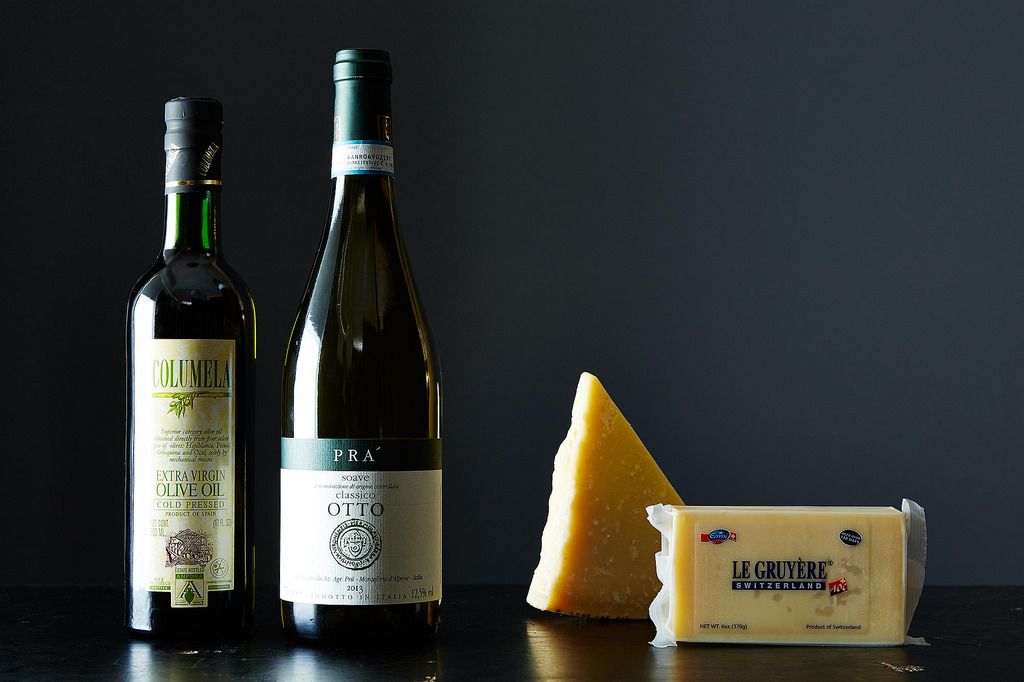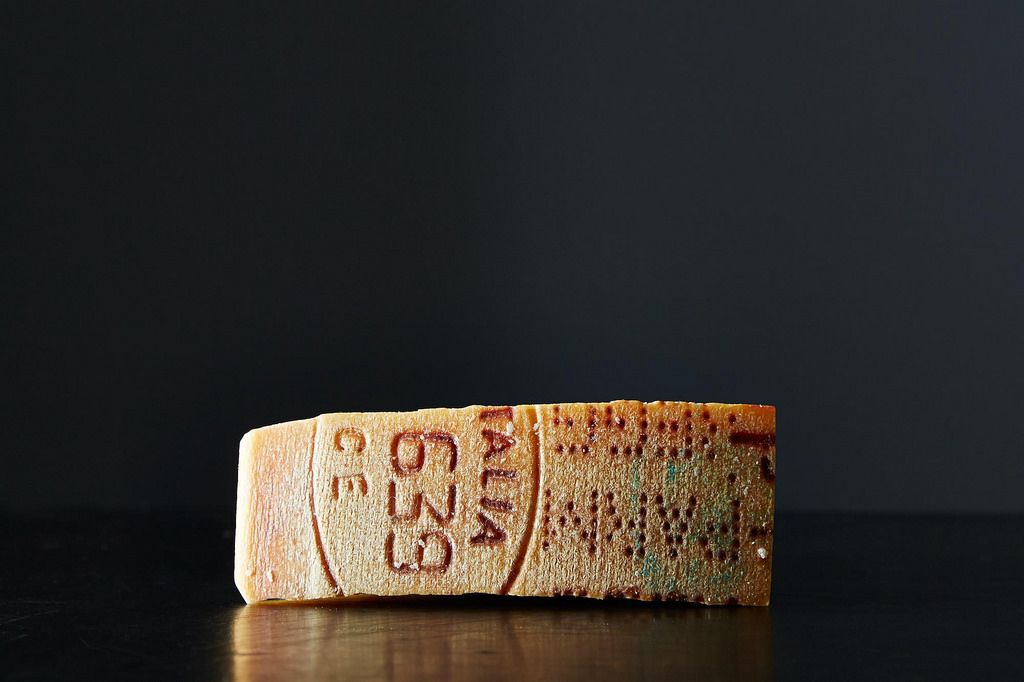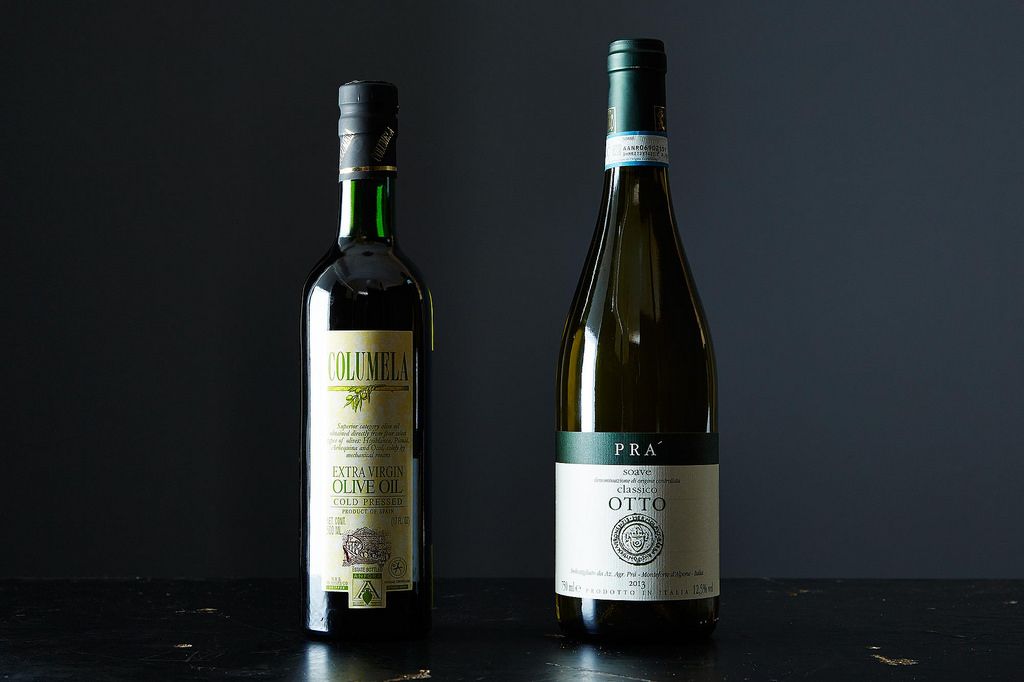Inspired by conversations on the Food52 Hotline, we're sharing tips and tricks that make navigating all of our kitchens easier and more fun.
Today: What's in a name? For many foods, hundreds of years of history and a standard of quality.

We rely on labels to gather information and make informed decisions while shopping. But labels can be as confusing as they are helpful; many are as full of half-truths and clever cover-ups as they are facts -- and often, their imagery and wording is merely a marketing ploy to increase sales.
Take Italy's Parmesan cheese (Parmigiano-Reggiano) -- one of the biggest victims of product mislabeling. Pick up a hunk of it at an average American grocery store, and underneath its name -- perhaps written in the colors of the Italian flag, or accompanied by the image of the flag itself -- it reads in fine print: Made in the USA.
So, what's the big deal? Food products are as much a story as they are a good. They're made in a context, and that context informs their tradition, their taste, and even their appearance (this concept is known as terroir). Parmesan cheese is said to have been in production since the 13th century; today it's made much in the same way, and its production is limited to the same geographic area of its tradition. Its quality is controlled and protected legally by these parameters.

It's no wonder then that Italian producers shudder at the sight of Parmesan-imposters littering the shelves of supermarkets. (For you Parmesan lovers, an easy way to identify the real deal is to look at the rind: It should be burned with the name of the cheese, like above.)
More: Learn how to talk about cheese like a pro.
It's easy to relate to this concept: Each of us has pride in products from our home state, region, and country. We'd be suspicious of a French farmer selling "Vermont Maple Syrup"; we'd be shocked to find "German Key Limes" in the grocery store. We might eat them, but we'd know they weren't the same -- they lack history; they lack method. Ultimately, it's not just about protecting a product -- it's about protecting a culture (and a livelihood).

The European Union's Geographic Indication labeling laws were developed to identify and protect quality products vital to a community's tradition and economy; when these laws aren't respected, it compromises the reputation and reliability of the products themselves. Wine, cured meat, olive oil, grains, and fruit are among the types of food that are protected. Here are the most common indications to look for when shopping:
- A Protected Designation of Origin (PDO) indicates that a product, like Greek Kalamata olives and Aceto Balsamico Tradizionale di Modena, has originated from a specific city, region, or country -- and that the overall quality and characteristics of that good are influenced by both the geographic and human factors (i.e. a traditional production method) of that place.
For example, French Roquefort cheese, which was first mentioned in 79 A.D., must be made from the raw milk of certain breeds of sheep, aged in the natural caves of Mont Combalou in Roquefort-sur-Soulzon, and be inoculated with Penicillium Roqueforti -- the mold that gives the cheese its signature color and pungency (the strain of mold was named after the historical cheese and its caves).
- Similarly, a Protected Geographical Indication (PGI) guarantees the production of a good within a certain geographic area, which influences the unique charactersitics and quality of that food -- English Plymouth Gin, German Lübeck marzipan, and Sicilian blood oranges are all examples. However, unlike a PDO, a PGI does not take into account human factors of production, method, and tradition.

- A Traditional Specialty Guaranteed (TSG) designation does not limit the production of a food to a specific geographic area. Instead, it requires that the raw materials and production method of that food must be traditional (in common use and passed on through generations) and distinguished from similar goods on the market. Spanish serrano ham and Italian mozzarella cheese are both TSG products.
The name of these designations can vary according to a country's language and internal regulations. Here are a few more acronymns to familiarize yourself with:
- In France and French speaking countries, PDO products like Swiss Gruyère can be marked AOC (Appellation d'Origine Contrôlée). For French wine, keep an eye out for AOP (Appellation d'Origine Protégée) and other designations that might indicate geography and quality.
- In Italy, PDO products are marked DOP (Denominazione di Origine Protetta). For wine, you will also see DOC (Denominazione di Origine Controllata) and DOCG (Denominazione di Origine Controllata e Garantita). The latter indicates that a wine has been inspected and tasted by a government official -- it will have a tape around the bottle's neck with its designation; other indications may be marked on the wine label itself.
More: Now that you can decode all those acronymns, here's how to read a wine label.

It's here: Our game-changing guide to everyone's favorite room in the house. Your Do-Anything Kitchen gathers the smartest ideas and savviest tricks—from our community, test kitchen, and cooks we love—to help transform your space into its best self.
Grab your copy
See what other Food52 readers are saying.